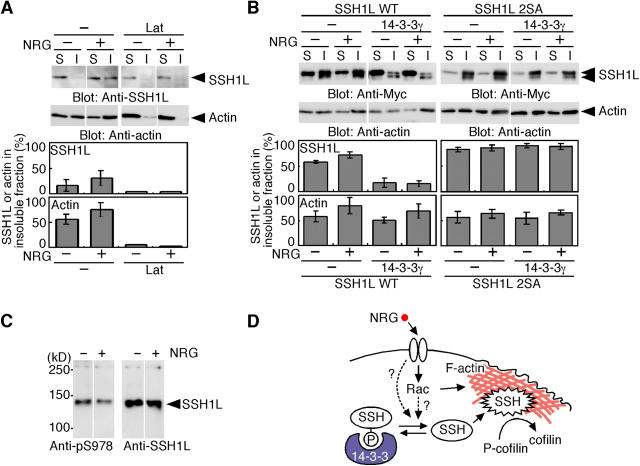Figure 5.
NRG induces translocation of SSH1L into the Triton X-100–insoluble cytoskeletal fraction and dephosphorylation at Ser-978. (A) NRG induces translocation of SSH1L to the Triton X-100–insoluble fraction. MCF-7 cells with or without pretreatment of Lat-A were exposed to NRG for 10 min and cell lysates were fractionated into Triton X-100–soluble (S) and –insoluble (I) fractions. Each fraction was run on SDS-PAGE and blotted using anti-SSH1L and anti–β-actin antibodies. Bottom panels indicate the ratio of the amounts of SSH1L and β-actin in the insoluble fraction, as means ± SD of triplicate experiments. (B) 14-3-3γ suppresses basal and NRG-induced translocation of SSH1L to the insoluble fraction. MCF-7 cells transfected with Myc-SSH1L(WT) or Myc-SSH1L(2SA) alone or cotransfected with 14-3-3γ were stimulated with NRG and cell lysates were fractionated and analyzed as in A. (C) NRG induces Ser-978 dephosphorylation of SSH1L. Lysates of MCF-7 cells before and after NRG stimulation were immunoprecipitated with anti-SSH1L antibody and blotted with anti-SSH1L and anti-pS978 antibodies. (D) A proposed model of the NRG-induced SSH1L activation and cofilin dephosphorylation.

